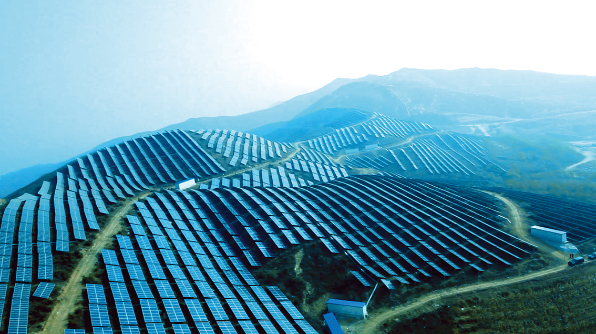An Ambitious Blueprint for China’s PV Development
13

04
2016
By PV Guangzhou Committee
In the last decade, China has made great progress in solar power. By the end of 2014, the total grid-connected solar power generation capacity has reached 28.05 million kilowatt, ranking third in the world. What’s more, China’s solar cells account for 70% of the world’s total solar cell output. Among the world’s top 10 solar cell manufacturing companies, 6 enterprises belong to Chinese owners.
However, China’s solar industry will not stop here. This year in the 13th five-year plan, a visionary blueprint for the development of China’s solar industry in the next 5 years has been drafted by Chinese central government. Now let’s give it a closer reading.
Firstly, more favorable policies will be made in an effort to provide a better market environment for businessmen home and abroad and for China’s solar industry to flourish healthily. Secondly, the total capacity of distributed energy stations will reached 70 million kilowatt by the end of 2020. In Jing-Jin-Ji region, Yangtze River economic zone, Peal River Delta, etc, 50 national-level distributed PV demonstration districts will be established with a capacity of 100,000 kilowatt each. Chinese central government will also encourage provinces to build 200 provincial-level distributed PV demonstration districts with a capacity of no less than 50,000 each. In some wealthy rural regions of Shanghai, Zhejiang, Jiangdu, Guangdong, etc, 100 villages will be transformed into innovative PV villages. Thirdly, prosperous regions such as Jing-Jin-Ji region, Yangtze River economic zone, Peal River Delta, etc, will eventually raise the percentage of solar power in their energy structure and replace most of the fossil fuel with solar energy.

To implement this ambitious five-year plan, PV equipment manufacturing companies are calling for more essential material, especially polycrystalline silicon. Even though China claims to have an annual polycrystalline silicon output of 180,000 tons, the effective capacity is only 80,000 tons, covering around 40% of market demand. From 2008-2015, more than 50% of polycrystalline silicon is imported annually. That is because most of the polycrystalline silicon companies in China do not have a firm technological foundation and their manufacture cost is much higher than that of oversea manufacturers, which renders them vulnerable to the impact of those imported low-priced polycrystalline silicon.In order to cut down the cost of solar power generation, China is in dire need of advanced PV technology and innovative technicians.
PV Guangzhou,a platform for technical exchange and companies explore worldwide marktet,attracts thousands of world-renowned enterprises to display their latest products and technology, beckoning tens of thousands of businessmen, experts and professionals to visit every year. If the international PV market appeals to you, you wouldn't want to miss PV Guangzhou2016.
PV Guangzhou short for Guangzhou International Solar Photovoltaic Exhibition
Date: September 26th-28th, 2016
Venue: China Import and Export Fair Complex
You can catch all the latest PV Guangzhou news on the website www.pvguangzhou.com, “follower us” on our Twitter page (@PVGuangzhou), or contact Ms. Eve Cheng via grand.ev@grahw.com


